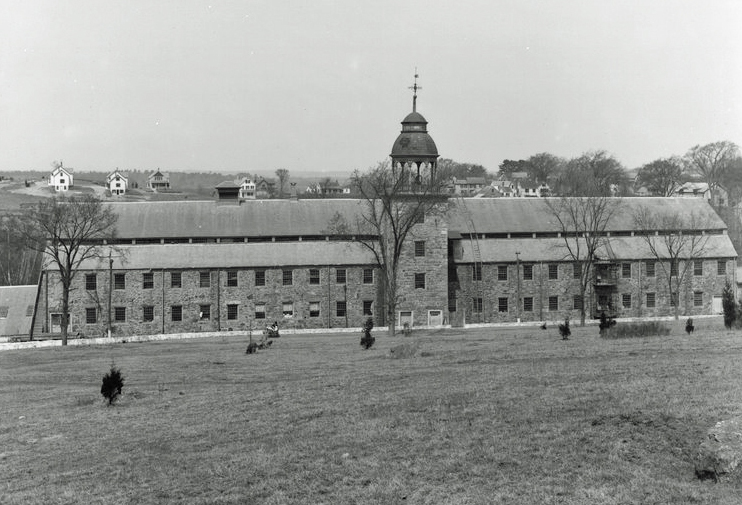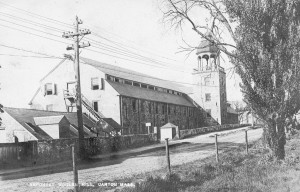True Tales from Canton’s Past: A long trip for Hank Williams’ coat
By George T. ComeauThe Rock and Roll Hall of Fame sits on the shores of Lake Erie in Cleveland, Ohio. My wife and I stopped in while driving to Chicago when we needed a halfway point to rest. The hall of fame is a shrine to rock in all its forms — from jazz to punk and all genres in between. We received our tickets and began our tour through the labyrinth of exhibits.
Within two minutes, we found ourselves in front of a case of items that recognized the contributions of Hiram King Williams — “Hank” — the American singer-songwriter who is considered one of the most important country music artists of all time. In the case were his hat, his boots and a coat he wore. The coat caught my eye — hanging on the hook you could plainly see the label, and it read “designed by Monarch — Neponset Emberglo.” Turning to my wife, I explained that no matter how far we travel, Canton is never far away. In true wife fashion, she rolled her eyes and moved on. I lingered on and thought how far that coat had traveled.
The Emberglo coat was crème colored and a heavy wool dyed with a western pattern, and according to the description was made in 1950. Emberglo was a trademark of the Neponset Woolen Mills, located on Walpole Street. The label had the word Neponset neatly stitched. Hank Williams’ coat started in the hands of factory workers from Canton. The coat tells a rich story that reaches beyond Hank Williams and into American history and the age of our industrial revolution.
The mill on Walpole Street is gone, but only recently. One of the most important mills in America, this site was first developed in 1801. When you stand here, you are on the original site of the second cotton factory in the colonies, the first being the 1799 Samuel Slater Mill in Pawtucket, Rhode Island. Today, a modern condominium complex, built by local developer John Marini, sits on this historic site.

The massive woolen mill complex on Walpole Street at the turn of the century (Courtesy of the Canton Historical Society)
The establishment of the cotton mill in Canton was due to the enterprise of a 22-year-old James Beaumont, a young man who had come from England to America in the spring of 1800. No stranger to manufacturing, Beaumont was born in Denby, a parish between Huddersfield and Sheffield, two important manufacturing towns in Yorkshire, England. Growing up on estates that produced wool and being part of a rather well-off family, Beaumont’s eye was on America. In 1799, Beaumont received a letter from two friends who had left England and settled in Lebanon, New Hampshire. The letter told of the opportunities that could be prospected in this new country. Beaumont sent a return letter with a draft of a spinning machine, which helped his friends begin their business in Lebanon. Soon thereafter, Beaumont decided he “got a hankering to go there and see what they were about.”
To leave England with secrets of manufacturing was risky, and if caught, Beaumont would face the full wrath of the English government. In order to avoid detection, he bought casks of hardware and cutlery along with bolts of cloth, and at the custom house in Liverpool he explained that he was simply a farmer’s son going to America on a trading trip.
Beaumont sailed to America on a trip that would take 56 days and would forever change textile manufacturing in the fledgling country. Landing in Salem, he visited a few factories, and by the winter of 1800 he had settled in Boston. An English acquaintance by the curious name of “Slimsey” (a nickname for sure) informed Beaumont that there was a fine mill-privilege in Canton, on which its two owners wished to set up a cotton factory, and that they were willing to erect a dam and the mill “if they could find somebody who would put in about $400, to pay for the machinery.”
Beaumont visited Canton, where he was so pleased with the mill-privilege that he agreed to furnish the machinery; his partners, Lemuel Bailey and Abel Fisher, would erect a substantial dam and a building for a factory. The construction of the dam and factory progressed during the year of 1801, and the machines were running by 1802. The first work of the factory was the manufacture of wickyarn for candle-makers. Soon thereafter, the mill began to make yarn for warp and filling for domestic fabrics. The first piece of cloth made was for sheeting. Beaumont said of it: “This, in 1802, was the first piece of cotton cloth ever made in America from mule-yarn, either all or in part produced.” Beaumont was mistaken: Cotton cloth had been made in 1794 in a factory in New York, but Beaumont’s mill was nonetheless producing fine cloth that sold for 50 cents a yard.
Beaumont did very well in this venture, and by 1823 at age 45, he retired from manufacturing and became a gentleman farmer. For a time he had a small mill in what was known as the British Block, not far from his original factory. His innovations continued, and he produced some of the first satin products in America. In 1808 he had erected the second brick house in Canton, the first being the Endicott House on Washington Street. In this handsome house Beaumont spent time with his family and friends and lived an entire life in his adopted home. Beaumont died in Canton in 1868 at age 90 and is buried alongside his wife, Abigail (Gookin), and his children at the Canton Corner Cemetery.
(Click on page 2 below to continue reading)
Page 1 Page 2
Short URL: https://www.thecantoncitizen.com/?p=7034











